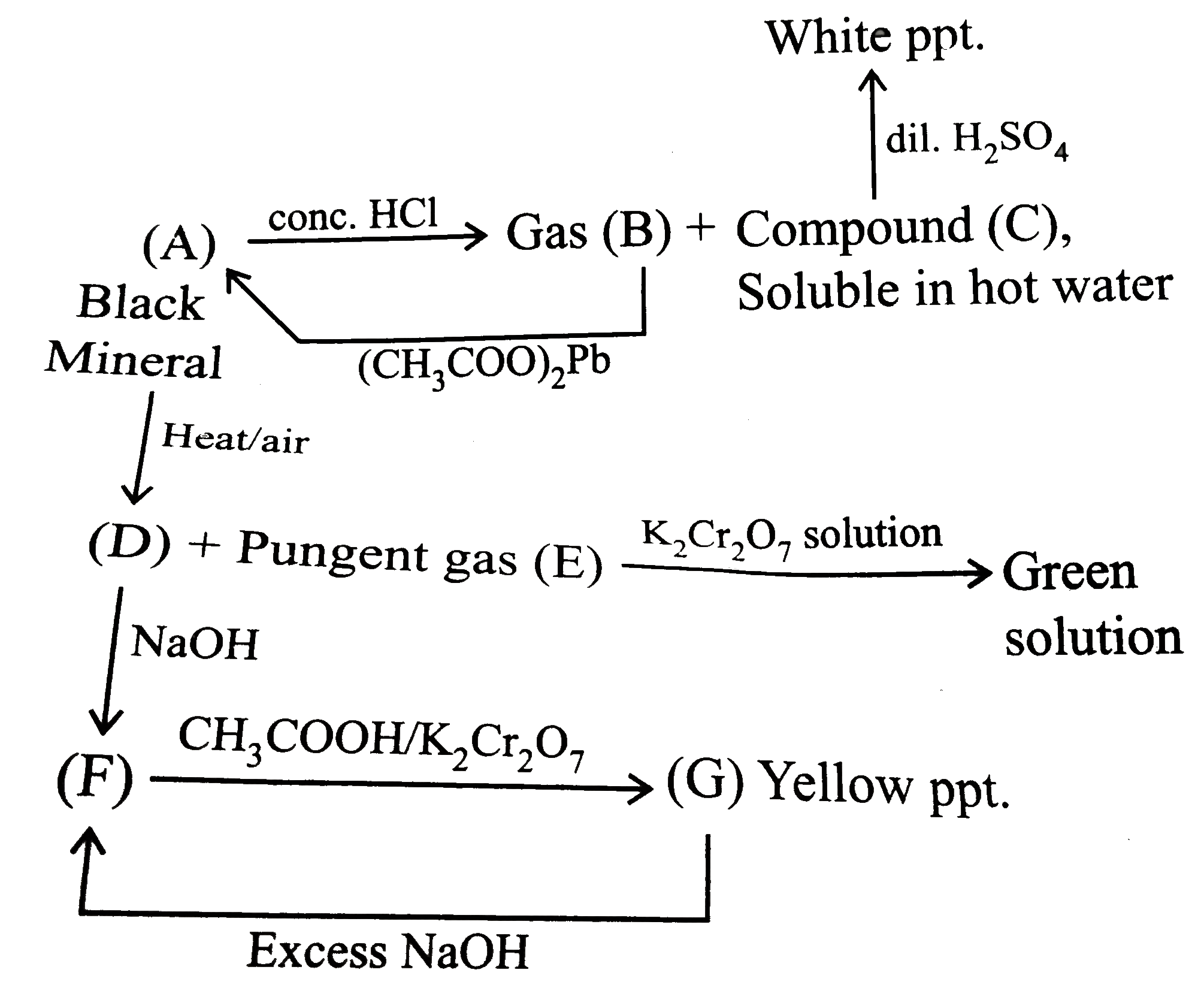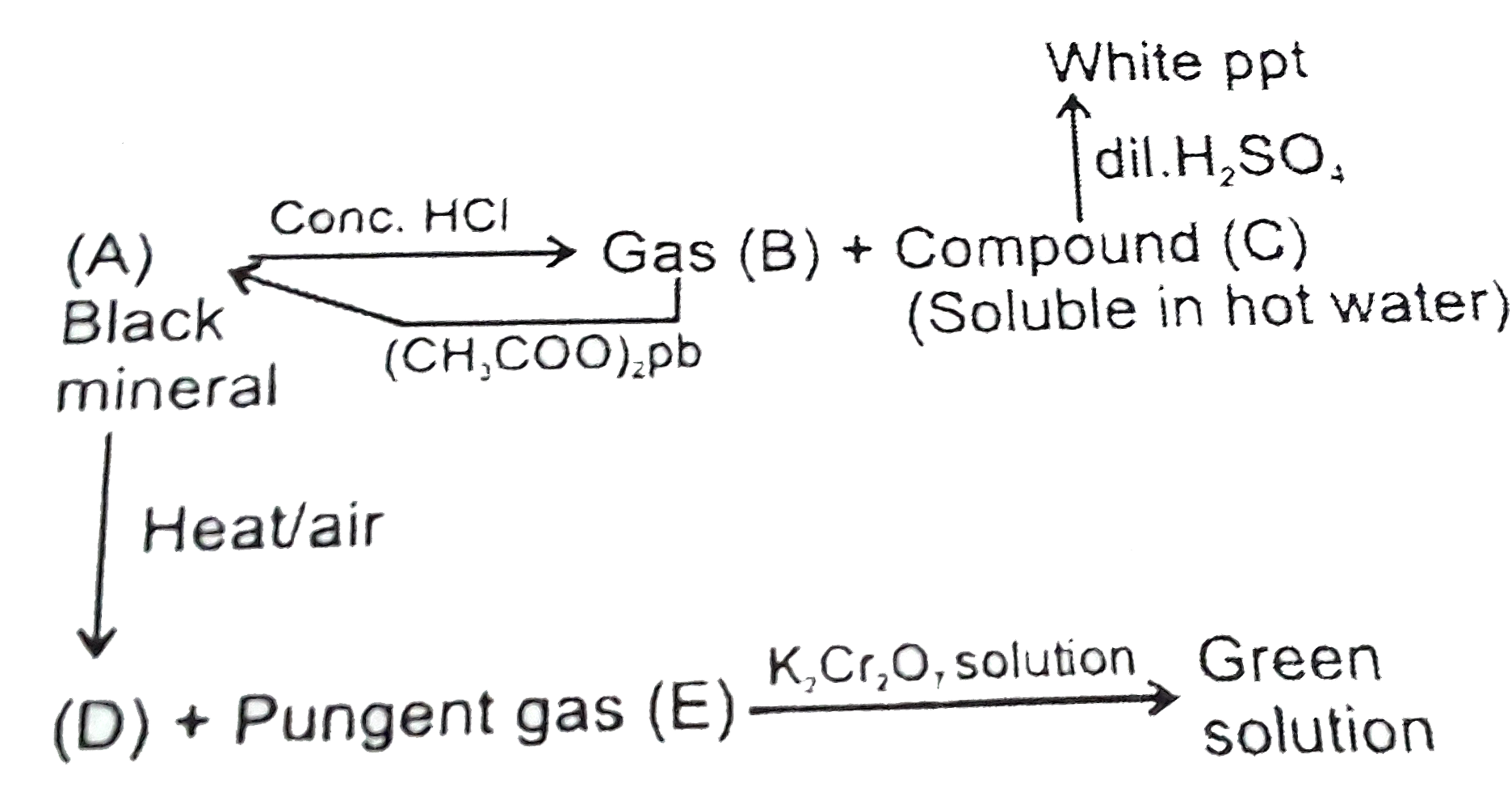Magnesium on heating in air gives (A) and (B). On reaction with water (B) gives a colourless gas (C).(C) when passed through CuSO4 solution, gives a blue coloured solution (D). Identify (C)
and (D).
To solve the problem step by step, we will identify the compounds formed during the reactions involving magnesium, and then determine the colorless gas and the blue solution produced.
Step 1: Identify the products formed when magnesium is heated in air.
When magnesium (Mg) is heated in air, it reacts with oxygen (O₂) to form magnesium oxide (MgO) and also reacts with nitrogen (N₂) to form magnesium nitride (Mg₃N₂).
- A = Magnesium Oxide (MgO)
- B = Magnesium Nitride (Mg₃N₂)
Step 2: Determine the reaction of magnesium nitride with water.
Next, we need to consider the reaction of magnesium nitride (B) with water (H₂O). The reaction can be represented as follows:
Mg3N2+6H2O→3Mg(OH)2+2NH3
From this reaction, we see that magnesium nitride reacts with water to produce magnesium hydroxide (Mg(OH)₂) and ammonia (NH₃).
- C = Ammonia (NH₃), which is a colorless gas.
Step 3: Identify the reaction of ammonia with copper(II) sulfate.
Now, we will consider the reaction of ammonia (C) when it is passed through a solution of copper(II) sulfate (CuSO₄). The reaction can be represented as follows:
CuSO4+4NH3⋯Cu(NH3)4SO4⋅H2O
This reaction forms a complex compound, which is a blue-colored solution.
- D = Tetraamminecopper(II) sulfate complex, which is a blue-colored solution.
Final Identification:
- C = Ammonia (NH₃)
- D = Tetraamminecopper(II) sulfate complex (Cu(NH₃)₄SO₄·H₂O)
When magnesium (Mg) is heated in air, it reacts with oxygen (O₂) to form magnesium oxide (MgO) and also reacts with nitrogen (N₂) to form magnesium nitride (Mg₃N₂).
- B = Magnesium Nitride (Mg₃N₂)
Next, we need to consider the reaction of magnesium nitride (B) with water (H₂O). The reaction can be represented as follows:
Now, we will consider the reaction of ammonia (C) when it is passed through a solution of copper(II) sulfate (CuSO₄). The reaction can be represented as follows:
- C = Ammonia (NH₃)
- D = Tetraamminecopper(II) sulfate complex (Cu(NH₃)₄SO₄·H₂O)
Topper's Solved these Questions
- S-BLOCK GROUP 2 - ALKALINE EARTH METALSBOOK - CENGAGE CHEMISTRY ENGLISHCHAPTER - S-BLOCK GROUP 2 - ALKALINE EARTH METALSEXERCISE - Exercises Linked Comprehension
42 Videos
- S-BLOCK GROUP 2 - ALKALINE EARTH METALSBOOK - CENGAGE CHEMISTRY ENGLISHCHAPTER - S-BLOCK GROUP 2 - ALKALINE EARTH METALSEXERCISE - Exercises Multiple Correct
25 Videos
- S-BLOCK GROUP 2 - ALKALINE EARTH METALSBOOK - CENGAGE CHEMISTRY ENGLISHCHAPTER - S-BLOCK GROUP 2 - ALKALINE EARTH METALSEXERCISE - Ex 5.1 Objective
2 Videos
- S-BLOCK GROUP 1 - ALKALI METALSBOOK - CENGAGE CHEMISTRY ENGLISHCHAPTER - S-BLOCK GROUP 1 - ALKALI METALSEXERCISE - Archives Subjective
8 Videos
- SOME BASIC CONCEPTS AND MOLE CONCEPTBOOK - CENGAGE CHEMISTRY ENGLISHCHAPTER - SOME BASIC CONCEPTS AND MOLE CONCEPTEXERCISE - Archives Subjective
11 Videos
Similar Questions
A metal X on heating in nitrogen gas gives Y,Y on treatment with H2O gives a colourless gas which when passed through CuSO4 solution gives a blue colour. Y is:
View Solution
Gas (B) on passing through CaSO4 solution will give
View SolutionA metal (A) on heating in nitrogen gas given compound B.B on treatment with H2O givens a colourless gas which when passed throught CuSO4 solution given a dark blue - violet coloured solution . A and B respectivley are :
View SolutionA metal (A) on heating in nitrogen gas given compound B.B on teratement with H2O givens a colourless gas which when passed throught CuSO4 solution given a dark blue - violet coloured solution . A and B respectivley are :
View Solution
Gas (B) on passing through cadmium acetate solution will give :
View SolutionCaCO3 on heating gives a white solid (A) and a gas (B), (A) on heating with carbon gives a solid (C) and a gas (D), (C) on hydrolysis glves a gas (E) and a solid (F) Identify (A), (B), (C), (D) , (E) and (F) .
View SolutionZinc on reaction with NaOH gives a salt (A) along with a gas (B).
(A) on reaction with H2S gas gives a white precipitate (C ).
Identify (A), (B) and (C ).
View SolutionA compound (A) on heating in Busen flame imparts brick red colouration. (A) on heating gives CO2 gas and a residue (B). The residue (B) when treated with water gives (c). On passing an excess of CO2 through (C) in water, a clear solution (D) is obtained. On boiling (D), compound (A) is reformed.
Compound (C) is
View SolutionA compound (A) on heating in Busen flame imparts brick red colouration. (A) on heating gives CO2 gas and a residue (B). The residue (B) when treated with water gives (c). On passing an excess of CO2 through (C) in water, a clear solution (D) is obtained. On boiling (D), compound (A) is reformed.
Compound (D) is
View SolutionA compound (A) on heating in Busen flame imparts brick red colouration. (A) on heating gives CO2 gas and a residue (B). The residue (B) when treated with water gives (c). On passing an excess of CO2 through (C) in water, a clear solution (D) is obtained. On boiling (D), compound (A) is reformed.
Residue (B) is
View Solution
